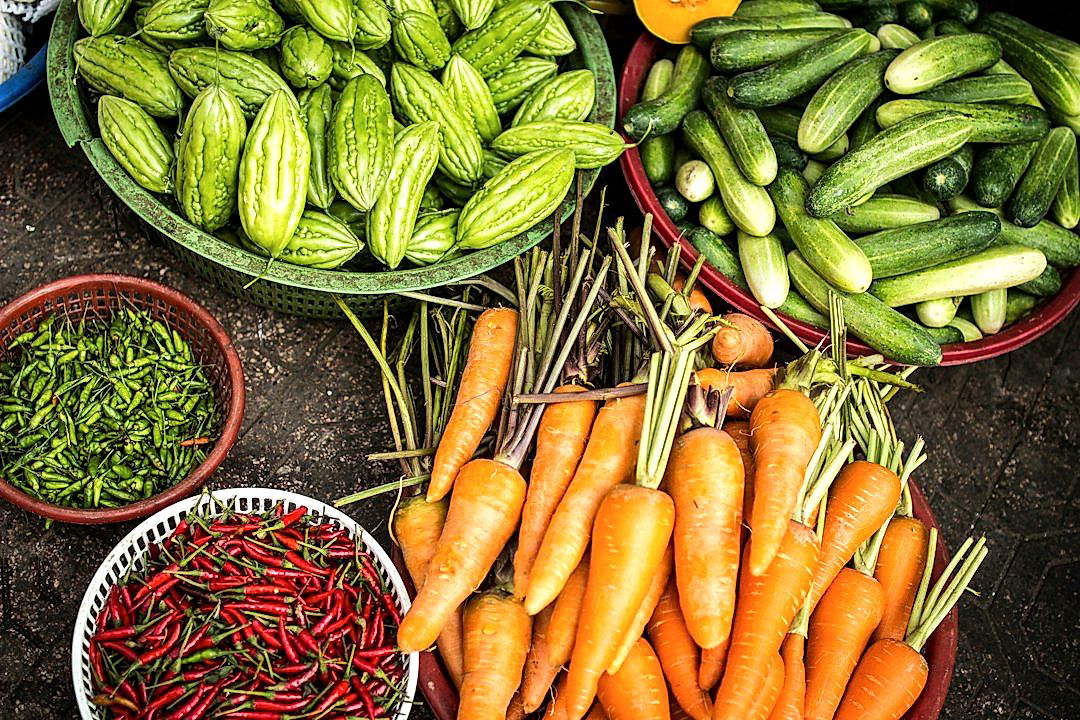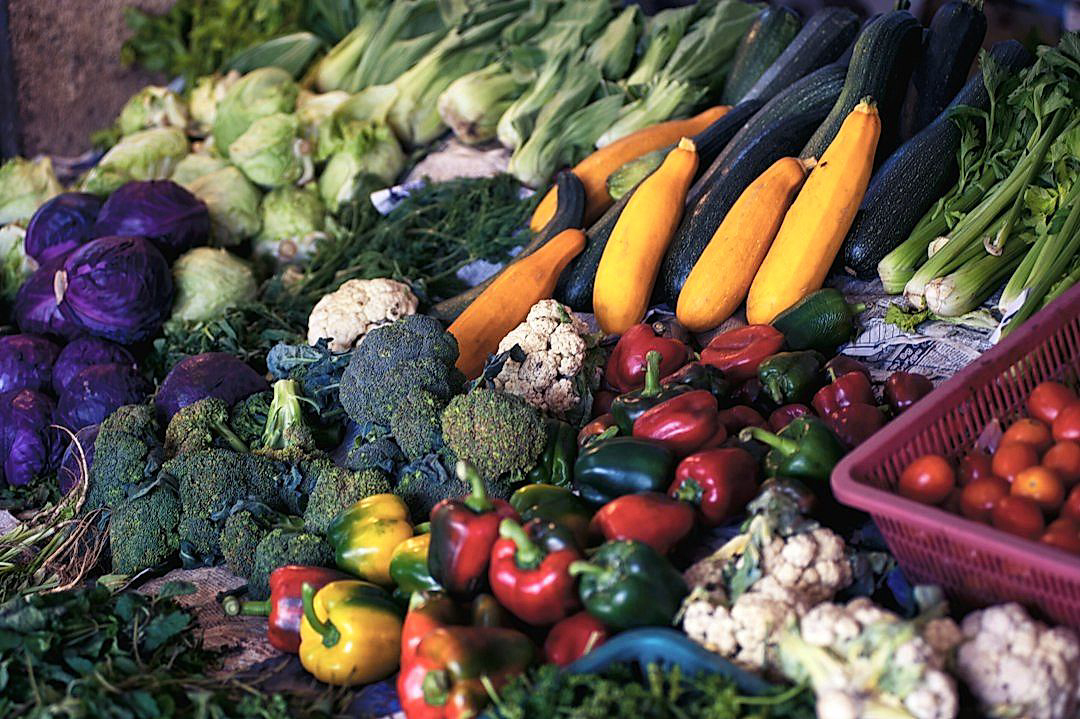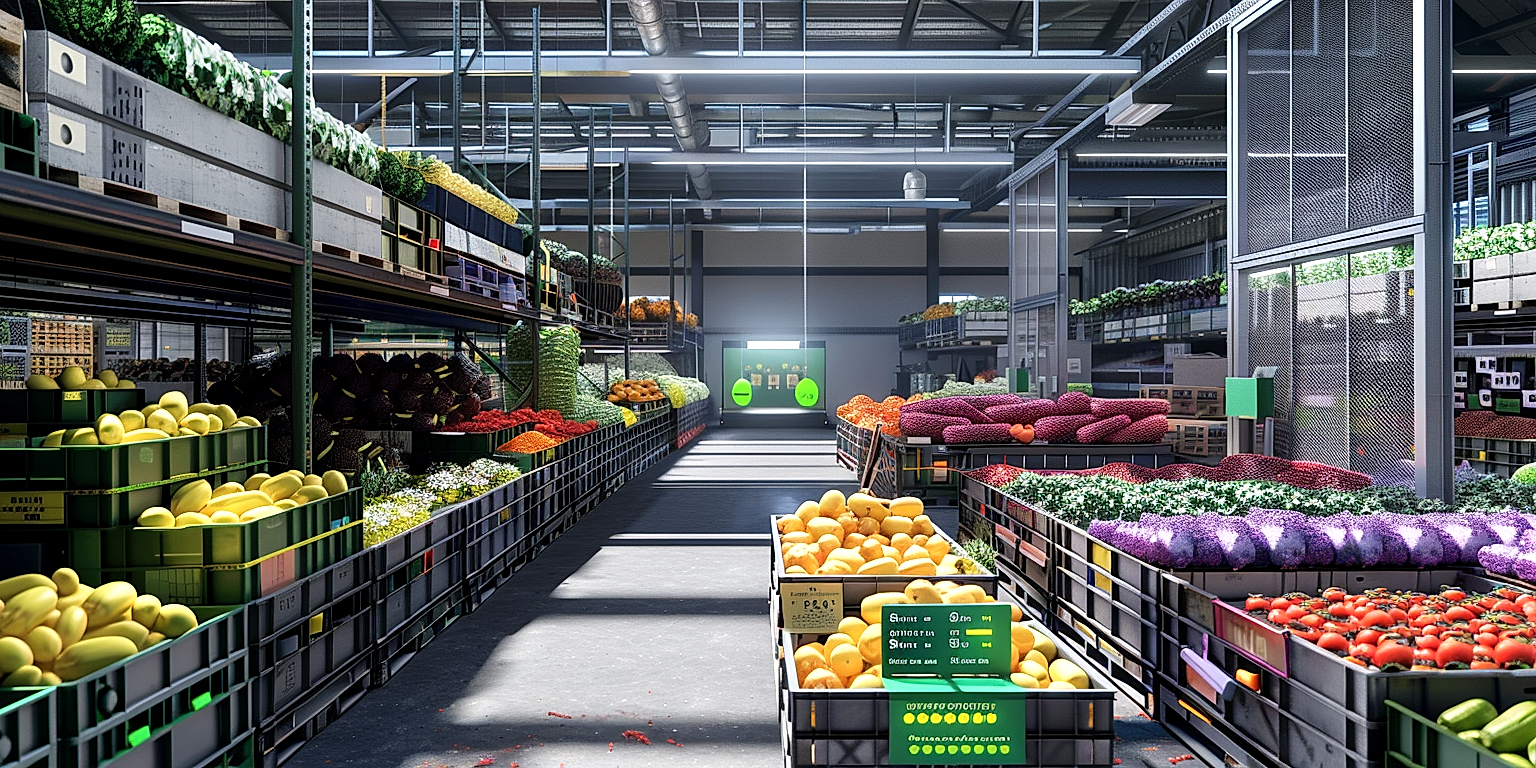A profound shift is underway in the produce processing industry.
Businesses are embracing sustainability not just as a moral imperative, but as a core part of their operational strategy.
As a vital component of this strategy, supply chain practices are undergoing a transformative change.
The implications of these changes cannot be overstated since supply chains often account for the majority of a company’s environmental footprint.
Through reimagining and reengineering traditional processes, produce processors can ensure a greener, more ethical, and more sustainable future.
In this context, we explore the core principles that underpin sustainable supply chain practices in the produce processing industry.
Contents
- Sustainable Supply Chain Practices For Produce Processors
- 1. Implement energy-efficient processing machinery
- 2. Use of Biodegradable Packaging Materials
- 3. Implement Waste-to-Energy Conversion Systems
- 4. Use locally sourced produce inputs
- 5. Minimize Single-Use Materials in Processing
- 6. Incorporate fair-trade practices in sourcing
- 7. Invest in Renewable Energy Sources
- 8. Optimize transport and logistics for reduced emissions
- 9. Support sustainable farming through suppliers
- 10. Use water-efficient processing techniques
- The Bottom Line
Sustainable Supply Chain Practices For Produce Processors
1. Implement energy-efficient processing machinery
The introduction of energy-efficient processing machinery is an important step towards creating a sustainable supply chain in the produce processing industry.
These machines consume less energy compared to traditional machinery, making the processing of fruits and vegetables more sustainable.
Furthermore, energy-efficient machines also reduce the overall carbon footprint of the supply chain.
Energy-efficient machinery not only reduces energy consumption, but also minimizes greenhouse gas emissions, contributing greatly to sustainability.
Apart from environmental benefits, they also provide cost savings for the company in the long run due to lower energy bills.
However, the initial investment in these machines might be high, making it a potential challenge for some companies, particularly small and medium enterprises (SMEs).
Despite this, there are various financial incentives available, such as grants and tax deductions, to encourage businesses to transition towards energy-efficient machinery.
These machines are not only limited to the indoor processing unit. Energy-efficient machinery such as small-scale wind turbines and solar panels can also be installed on the premises.
By harnessing renewable energy, the produce processing industry is demonstrating a commitment to sustainability.
To ensure the smooth operation of the machines and reap its full benefits, regular maintenance is required.
This includes scheduled servicing, cleaning, and repair to prevent the machines from breaking down and causing disruptions to the supply chain.
Additionally, it is crucial to train the staff on the correct usage of these machines. Training will increase the efficiency of operation and prolong the lifespan of the equipment.
Beyond just selection and installation, the integration of energy-efficient machinery into existing systems might require redesigning of processes.
Improving energy efficiency is not a one-time task, but a continuous effort. It requires constant monitoring and optimization.
One way to do this is by using energy management systems to track the energy use and identify areas for further improvement.
Overall, the implementation of energy-efficient processing machinery in the produce processing sector is a major milestone towards establishing sustainable supply chain practices.
2. Use of Biodegradable Packaging Materials
The transition to using biodegradable packaging materials is a crucial measure in implementing sustainable supply chain practices for produce processors.
Biodegradable packaging is made from a diverse range of natural products including seaweed, cornstarch, and mushroom roots, among others.
It’s designed to break down over time with the assistance of microorganisms thus causing no harm to the environment.
This type of packaging is a key step towards reducing a company’s carbon footprint and can greatly contribute to the firm’s overall sustainability efforts.
They offer a long-term solution to the surge in global plastic waste, which continues to harm our marine life, congest waste management facilities, and even endangering human health.
Using biodegradable packaging helps in the transition to a circular economy, where resources are kept in use for as long as possible, and waste is minimized.
This type of packaging also has the potential to break the chain of plastic pollution thereby safeguarding biodiversity and promoting food safety.
On the consumer end, these types of packaging are perceived positively as they are seen as a commitment to environmental responsibility, which can boon consumer satisfaction and loyalty.
While there are challenges such as higher costs and lack of consistency in quality, the benefits of biodegradable packaging unarguably outweigh the drawbacks.
Thanks to the continual development of technology, the quality and functionality of these environmentally friendly options are constantly being improved.
For businesses concerned with cost, the implementation of biodegradable packaging can be a gradual process, starting with certain product lines and expanding over time.
Moreover, it’s important to note that consumer demand for environmentally friendly products is on the rise, and businesses that fail to meet these expectations may miss out on significant opportunities.
Engaging with suppliers that prioritize the eco-friendly production of packaging and are committed to sustainability, can help businesses transition more easily.
Furthermore, the use of biodegradable packaging aligns with sustainable development goals set out by international bodies such as the United Nations.
Biodegradable packaging, therefore, represents a tangible, visible aspect of a firm’s commitment to environmental stewardship, and its successful implementation can significantly contribute to a more sustainable supply chain.
3. Implement Waste-to-Energy Conversion Systems
For businesses in the produce processing industry, it is essential to adopt a sustainable approach in every aspect of their operations, and one such area is the implementation of waste-to-energy (WTE) conversion systems.
WTE conversion is a process of generating energy in the form of electricity or heat from the primary treatment of waste.
By integrating these systems into their supply chain, produce processors can address two issues: waste management and energy production.
Most produce processing activities result in significant amounts of waste, from unused parts of fruits and vegetables to packaging waste, which can be costly and challenging to manage.
Instead of sending the waste to landfills, processors can convert the waste into useful byproducts such as energy.
This not only minimizes their environmental footprint but also enables them to become self-sufficient in their energy needs, thereby reducing the reliance on nonrenewable energy sources.
Many WTE technologies are available, each with different benefits and suitable under different circumstances.
For example, incineration is among the most common methods, which burns the waste materials under high temperatures, creating steam to generate electricity.
Another method, anaerobic digestion, involves the decomposition of organic waste materials by microorganisms in an oxygen-free environment, producing biogas which can be used for heating or power generation.
Despite their benefits, the successful implementation of these systems requires consideration of economic viability, waste composition, and municipal infrastructures.
For instance, the high initial costs for WTE technologies can be a barrier for many small and medium-sized processors.
However, with the right planning and strategies, these challenges can be overcome.
Some processors have partnered with waste management companies to share the technology costs, while others have invested in research and development to customize their systems to their specific needs.
Incorporating WTE systems into the supply chain goes beyond just optimizing the use of resources and minimizing waste.
It also reflects the company’s commitment to sustainability, which can increase its reputation among customers and stakeholders, and provide a competitive advantage in the market.
Ultimately, the application of WTE conversion systems in the supply chain is a significant step towards achieving a more sustainable produce processing industry.
4. Use locally sourced produce inputs
One of the main ways to ensure the sustainability of the supply chain for produce processors is to use locally sourced produce inputs.
Local sourcing not only reduces the greenhouse gases emissions associated with long-distance transportation but also supports the local economy and fosters community relations.
Transportation emissions are significantly reduced when produce is sourced locally, contributing to the reduction of the company’s carbon footprint.
Not only does this benefit the environment, but it also aligns with the expectations of increasingly eco-conscious consumers, providing a boost to the company’s public image and potentially resulting in higher sales.
Furthermore, sourcing produce locally allows a business to form stronger relationships with growers, fostering a sense of trust and community.
Businesses can ensure that their produce is grown using sustainable agricultural practices by maintaining a close relationship with local growers.
In many instances, produce processors may also be able to exert a positive influence on their suppliers to encourage them to transition to more sustainable farming practices.
Such correlations can potentially lead to increased levels of sustainable practices across the board, benefiting all stakeholders involved in the supply chain.
In a broader perspective, supporting local growers boosts local economy which in turn can contribute towards local sustainable development initiatives and poverty reduction.
Moreover, seasonality can be embraced more effectively when sourcing locally, which further contributes to sustainability by reducing the demand for out-of-season foods that require more resources to produce and transport.
Sourcing locally might require taking a new approach to planning and managing the supply chain, but the benefits in terms of sustainability and resilience can be significant.
There might be challenges, including potential supply uncertainty in the event of local crop failures, and the potentially higher cost of local produce compared to cheap imports.
However, strategic planning and effective risk management can help to mitigate these risks.
Furthermore, consumers today are increasingly willing to pay a premium for products that are sustainably produced and local, which can offset any potential increase in cost.
On the whole, integrating the use of locally sourced produce into the supply chain is a winning strategy for sustainable growth in the produce processing industry.
5. Minimize Single-Use Materials in Processing
One of the pivotal sustainable practices necessary for produce processors is the minimization of single-use materials during processing.
Single-use materials, such as disposable gloves, plastic bags, and wrappings, constitute a substantial portion of the waste generated by many processing facilities.
Most of this waste often ends up in landfills, contributing to soil contamination and greenhouse gas emissions.
Thus, reducing the reliance on these materials is not merely an ethical responsibility, but it also presents economic benefits.
In the long term, investing in reusable materials and equipment can significantly reduce overhead costs related to waste management and disposal.
Produce processors can rethink their processing strategies to reduce dependence on disposable items.
For instance, reusable gloves and aprons can replace their single-use counterparts, while resealable storage containers can substitute for plastic bags.
Furthermore, if single-use materials are unavoidable, it is imperative to ensure that they are recyclable or compostable.
Produce processors can adopt processing technologies and designs that minimize waste.
There is a need for innovative solutions that can help reduce the amount of waste produced during processing.
Such solutions may include advanced equipment that can process food more efficiently, reducing the amount of waste produced.
In some cases, it might be worth considering a change in the product’s design to utilize less packaging.
On the other hand, processors can also work with their suppliers to reduce packaging and other forms of waste at the source.
A partnership with suppliers can potentially result in the development of more sustainable delivery methods that reduce the use of single-use materials.
All these efforts, when integrated, can make a significant contribution towards promoting sustainability in the produce processing sector.
Therefore, minimizing the use of single-use materials in processing is more than just an environmental obligation; it’s a potential cost-saving and business-enhancing initiative.
6. Incorporate fair-trade practices in sourcing
Unlike conventional supply chains, sustainable supply chains place a significant emphasis on fair-trade practices.
Fair-trade is not just about paying producers a fair price for their goods.
It also takes into account environmental considerations, working conditions, and initiatives that support local communities.
This inclusiveness ensures that a wide range of stakeholders benefits from sustainable business practices.
Produce processors can incorporate fair-trade practices by partnering with suppliers who share their commitment to sustainability and social equity.
This could involve seeking out producers who engage in organic and sustainable farming techniques, pay fair wages, and invest in community development.
Transparency is another crucial aspect of fair-trade practices.
Prospective partners should be willing to share information about their operations, such as where and how they grow their crops, how they treat their workers, and what they do to minimize their environmental impact.
By incorporating fair-trade practices in their sourcing strategy, produce processors can enhance their social and environmental impacts while aligning themselves with consumers who prioritize ethical consumption.
Furthermore, this also allows businesses to protect themselves from potential supply chain disruptions, such as those arising from poor labor practices or environmental degradation.
However, implementing fair-trade practices in sourcing does not come without challenges.
It may increase costs, make sourcing more complex, and require an investment in responsible management systems.
Yet, the long-term benefits of incorporating fair-trade practices, both in terms of sustainability and brand reputation, often outweigh these initial challenges.
Ultimately, incorporating fair-trade practices into sourcing is an essential step towards creating a truly sustainable supply chain in the produce processing industry.
7. Invest in Renewable Energy Sources
With the advent of modern technology, produce processors can now switch from conventional energy sources to renewable ones.
The investment in renewable energy sources is a fundamental step in integrating sustainability into the supply chain of produce processing companies.
Renewable energy sources include solar, wind, hydro, and bioenergy, which are inexhaustible and reduce greenhouse gas emissions.
Among these, solar energy is the most commonly used since the sun’s energy is widely available and can be harnessed using solar panels.
Investing in these renewable energy technologies generates substantial environmental benefits by drastically reducing carbon emissions, ultimately contributing to the global effort against climate change.
Moreover, the use of renewable energy can dramatically decrease dependency on fossil fuels and reduce the frequent price fluctuations linked to them.
Besides, the use of renewable energy technology isn’t just a sustainable choice, it can also be a smart economic move due to government incentives and the decreasing cost of technology.
Renewable technology typically has longer life spans than non-renewable technologies, lowering replacement costs in the long run.
Interestingly, transitioning to renewable energy also fosters technological innovation and can create jobs, further pushing economic and societal growth.
Furthermore, introducing renewable energy in one’s own operations gives produce processors the chance to spearhead sustainability practices within their industry.
Produce processors can promote their use of renewable energy in marketing campaigns, solidifying their position as industry leaders in sustainable practices.
Sourcing from renewable energy can also increase the value proposition to consumers, as increasingly more consumers prefer to support companies that are environmentally responsible.
It’s essential for processors to conduct an energy audit or analysis to determine the most effective renewable energy sources to integrate into their operations and supply chains.
Consulting with energy professionals can assist in understanding the potential benefits and savings, installation process, maintenance and the best technology to utilize.
Investing in renewable energy sources, thus, presents a myriad of advantages including financial savings, reduction in greenhouse gases, and improvements in brand value.
8. Optimize transport and logistics for reduced emissions
With the escalating threats of climate change an increasingly pressing concern for businesses worldwide, optimizing transport and logistics to reduce greenhouse gas emissions has become a key component of sustainable supply chain practices, particularly for produce processors.
Transportation, as a rule, comprises a significant proportion of a company’s overall carbon footprint, with large amounts of fossil fuels consumed during the transfer of goods.
This fact holds especially true for the produce processing industry, given the nature of sourcing materials from various locations and distributing final products to a wide array of destinations.
One way to reduce emissions in transport and logistics is by increasing vehicle efficiency, which lends vital support to sustainability endeavors in the supply chain.
This involves the implementation of aerodynamically efficient designs, usage of low emission vehicles, and regular vehicle maintenance, among other strategies.
Additionally, optimizing routing and scheduling constitutes another way of lowering emissions.
Such optimization involves smarter route planning and the consolidation of shipments, effectively reducing the total mileage and therefore the carbon footprint of any specific transportation activity.
Another key method of lowering transportation-associated emissions is by shifting towards modes of transportation that feature inherently lower emission rates.
This shift might involve choosing rail, ship, or pipeline over road-based methods, or transitioning towards greener alternatives such as electric or hybrid vehicles wherever possible.
For produce processors specifically, this can be particularly critical, given the perishable nature of their products and the associated requirement for swift and efficient transportation.
Moreover, focusing on the use of renewable energy sources in the transportation process, as well as investing in latest technology, are other strategies within reach of processers to further optimize their logistical efforts.
By integrating these strategies, businesses can not only lower their absolute GHG emissions, but they can also realize potential cost savings in the long run, underscoring the twin benefits of financial and environmental sustainability.
It is also important to maintain an ongoing monitoring and auditing process, to assess the efficiency and effectiveness of emission reduction strategies, and make appropriate adjustments as needed.
However, shifting towards a more sustainable model for transport and logistics is not simply about adapting to more sophisticated technologies – it requires a cultural transformation across the organization.
An organization’s commitment to sustainability ought to be embedded throughout its supply chain and strategically integrated into core business operations.
The importance of this commitment can never be overstated: it is a key determinant of long-term business viability in a rapidly changing world.
9. Support sustainable farming through suppliers
As a produce processor, a significant aspect of implementing and promoting sustainability involves partnering with suppliers who engage in sustainable farming practices.
Sustainable farming is an environmentally-friendly approach to agriculture that considers the long-term health of ecosystems and promotes the efficient use of resources.
For a business, choosing to support these practices through suppliers can result in an overall reduction in their carbon footprint, contributing to their sustainability goals.
It can also help to build positive relationships with consumers who are increasingly concerned about the environmental impact of their purchases.
Fostering relationships with suppliers of sustainably farmed produce can provide a host of benefits, ranging from bolstering your brand’s eco-friendly reputation to reducing the risk of resource scarcity in the long run.
To begin supporting sustainable farming in your supply chain, it requires carefully selecting your suppliers.
You may need to seek out farmers who are committed to employing sustainable practices, such as minimizing pesticide use, utilizing water efficiently, and protecting local wildlife.
However, verifying the sustainability of suppliers can sometimes be challenging.
One strategy could be to look for suppliers who are either certified organic or have received a sustainability certification from a recognized organization.
Another approach might be to establish a direct dialogue with your suppliers.
Communicating your expectations clearly from the outset, as well as maintaining open lines of communication, can help ensure mutual understanding and alignment of sustainability goals.
In return for their commitment to sustainable practices, you might consider offering incentives such as long-term contracts or premium pricing.
This not only helps to secure your supply chain but also encourages and rewards the adoption of sustainable farming practices across the board.
Remember however that supporting sustainable farming through suppliers isn’t just about what comes into your business, but also how it got there.
Transportation is another crucial consideration, so be sure to factor in the environmental impact of logistics when sourcing from sustainable suppliers.
This practice does not merely resonate with the increasing trend of environmental consciousness among consumers but also serves as a base for any produce processor aiming for a truly sustainable operation.
10. Use water-efficient processing techniques
Water is a vital resource for produce processors, being a crucial component in a variety of operations, ranging from cleaning and sanitizing raw materials to being a key element in the actual processing of the produce.
Despite its importance, the traditional means of using water can lead to significant waste, which not only increases the company’s operating costs but also adds unnecessary pressure on the local water resources.
Fortunately, water-efficient processing techniques provide sustainable solutions that can reduce water usage while maintaining product quality.
One strategy is to recycle and reuse water in the processing plant, a system that can drastically cut down on the volumes of fresh water required.
It is imperative to ensure that the water is thoroughly treated before reuse to comply with food safety standards and prevent cross-contamination.
Implementing technologies such as automated water meters can help monitor and control water usage, identifying areas where water consumption can be reduced without compromising the process efficiency.
Another effective measure is the practice of dry sanitation, which involves using dry cleaning equipment and processes that require minimal to no water.
Water-efficient equipment, like high-pressure, low-volume cleaning systems, can also deliver superior results while using significantly less water.
The design of the processing plant can also be optimized to minimize water usage, for example, by installing downward sloping floors to reduce rinsing water volumes and ensuring proper drainage to minimize water pooling and subsequent waste.
Even minor changes, like using spray nozzles instead of open hoses for cleaning, can save substantial quantities of water.
Importantly, the need for water efficiency must be communicated to every employee in the company, promoting a culture of conservation and efficiency.
Regular training and education programs can be conducted to keep employees updated about the best practices in water efficiency.
Moreover, integrating water efficiency objectives into the company’s sustainability policies and goals can provide a strategic direction, driving consistent efforts and investments towards water conservation.
Indeed, adopting water-efficient processing techniques is not just about conserving a precious resource, but also about maintaining the integrity and sustainability of the produce processing industry as a whole.
It is important to note that the implementation of water efficient measures is not a one-time action, but should be seen as an ongoing commitment and a necessary component in building a sustainable supply chain.
The Bottom Line
Implementing sustainability strategies in the field of food manufacturing is not only an environmental obligation but also a strategic business enhancement.
Energy-efficient machinery and waste-to-energy systems can significantly cut costs and reduce emissions.
The use of biodegradable packaging materials and minimizing single-use materials can contribute to a more circular economy.
Sourcing locally not only supports the local economy, but significantly reduces carbon footprints.
Adhering to fair-trade practices is essential for economic and social sustainability.
Investing in renewable energy sources further ensures eco-friendliness.
The optimization of transport logistics can slash emissions while maintaining operational effectiveness.
Through supporting sustainable farming practices and implementing water-efficient techniques, the industry can vastly reduce its environmental impact.
This holistic approach indeed presents a beneficial route for both businesses and the environment alike.




